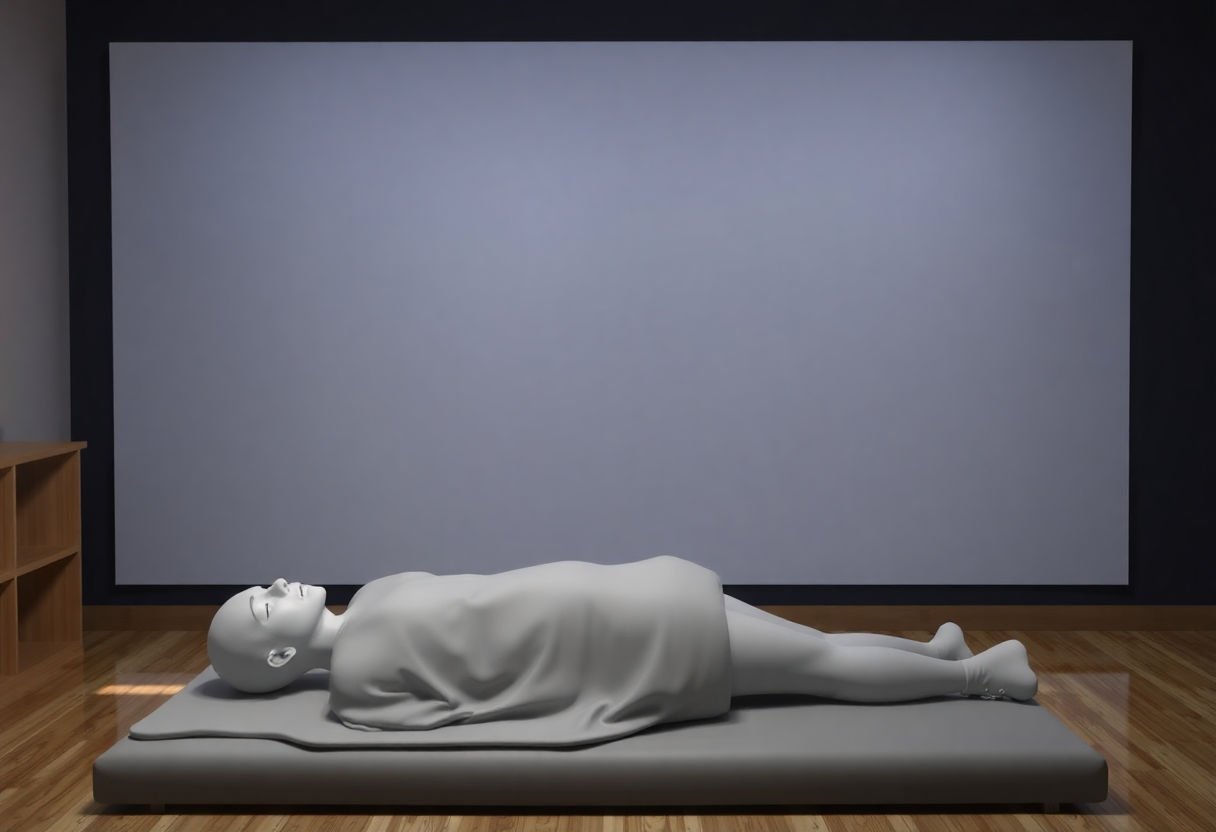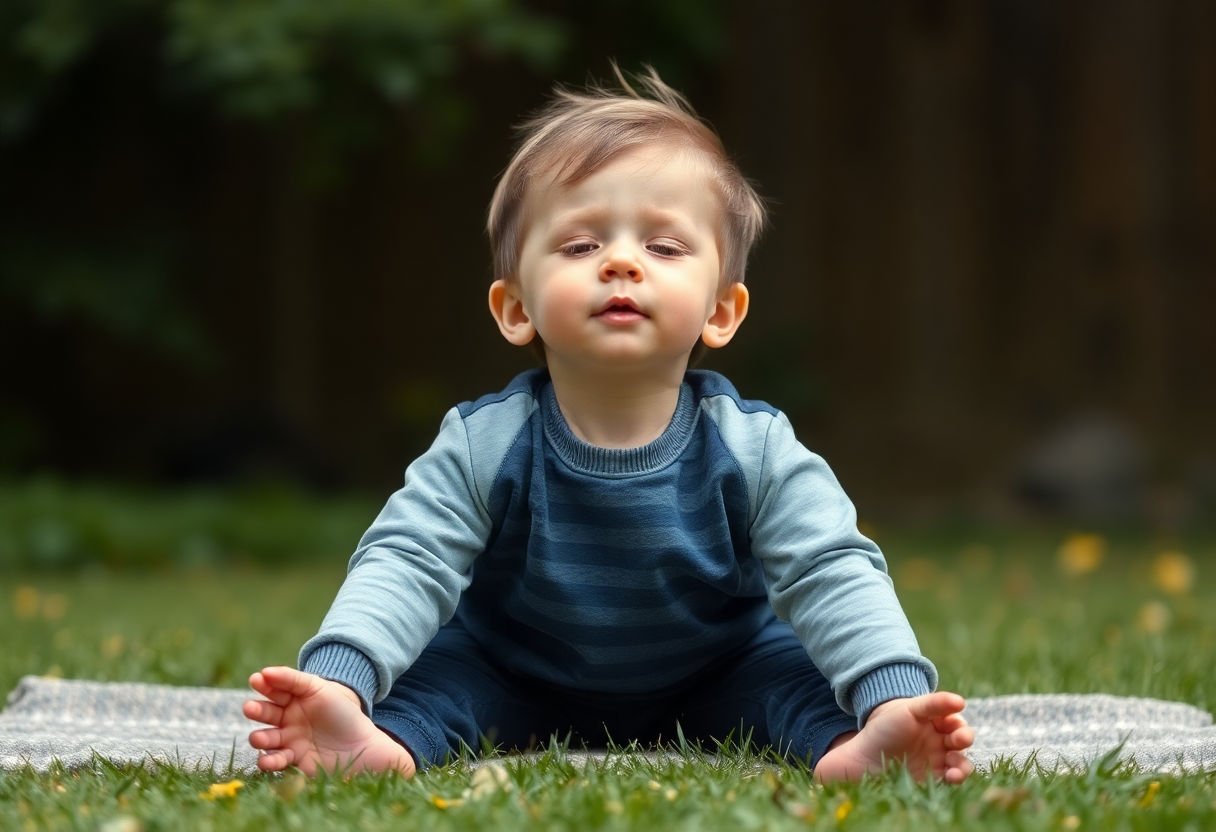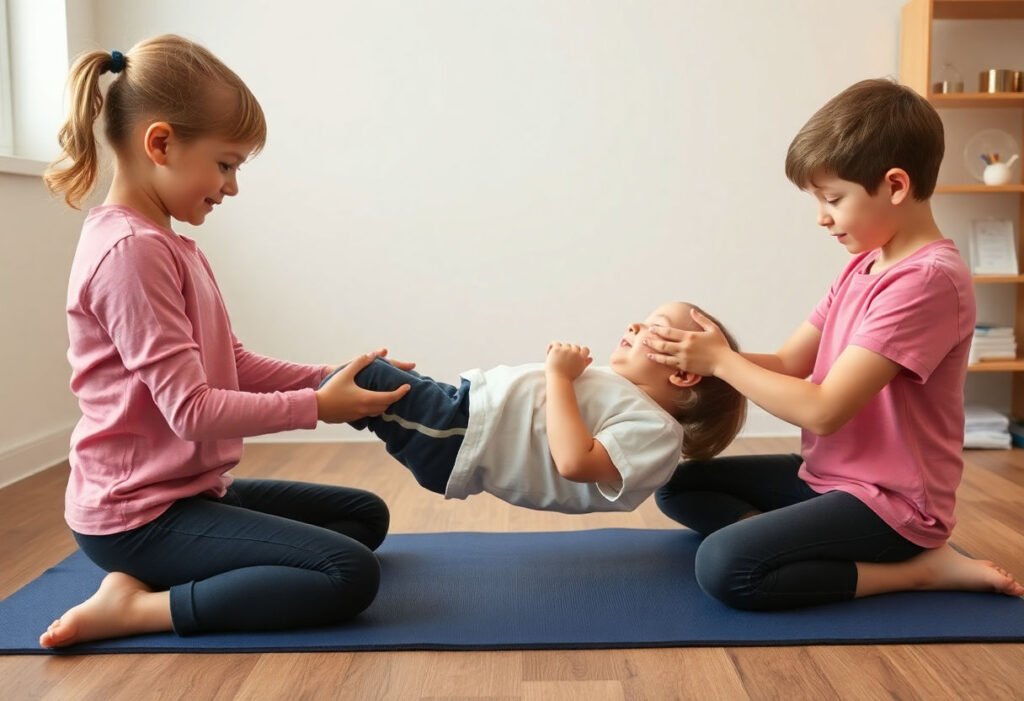In today’s pursuit of optimal health for children, myofunctional therapy emerges as a beacon of transformative potential. This therapy, centered on simple yet effective exercises, holds the promise of enhancing children’s breathing, speech, and overall health. By correcting oral posture, it addresses several childhood concerns, laying a foundation for improved well-being. As you delve into this article, you will discover the profound benefits of myofunctional therapy, understand its core principles, and learn how it seamlessly integrates into daily routines. With a focus on empowering parents and professionals, we highlight its critical role in fostering healthier futures for our youth.
Key Takeaways
- Myofunctional therapy plays a vital role in enhancing children’s oral posture and health.
- The therapy significantly contributes to improving children’s breathing, speech, and overall wellness.
- By addressing common myofunctional disorders, these exercises promote better swallowing, leading to more efficient digestion and nutrient absorption.
- Incorporating breathing exercises into kids’ routines fosters better respiratory function and can alleviate symptoms related to poor breathing habits.
- Working with certified myofunctional therapists ensures that children receive personalized and effective care tailored to their specific needs.
Understanding Myofunctional Therapy

Myofunctional therapy is an emerging field of health care that addresses disorders related to the oral and facial muscles, focusing on establishing correct oral habits. This therapy is deeply embedded in corrective practices that target the optimal function of these muscles. At its core, myofunctional therapy aims to ensure that oral posture is correct, which involves the appropriate position of the tongue, lips, and teeth. Correct oral posture is essential as it impacts breathing, swallowing, and even speech.
Central to myofunctional therapy are its foundational principles that involve retraining the muscle function patterns. These principles rest on the understanding that numerous health and developmental issues can stem from poor orofacial habits. Through consistent exercises and techniques, children can learn to engage their oral muscles properly, paving the way for better health outcomes.
A myofunctional therapist often collaborates closely with other healthcare professionals to develop personalized therapy plans that cater to the unique needs of each child. These plans may involve exercises that are designed to strengthen the tongue, improve nasal breathing, and achieve proper lip seal. The comprehensive nature of myofunctional therapy makes it a crucial intervention for children experiencing difficulties related to oral and facial functions.
Moreover, the therapy is supported by a belief that early intervention can dramatically improve a child’s quality of life, addressing potential issues before they escalate into chronic problems. Consequently, understanding these foundational aspects empowers parents and caregivers to recognize the importance of such therapeutic interventions in fostering healthier development in children.
Benefits of Myofunctional Therapy for Kids
Myofunctional therapy offers numerous benefits for children, significantly impacting their daily lives and long-term well-being. One of the foremost advantages is the improvement in oral posture and function. This therapy helps in rectifying aberrant resting postures of the tongue, lips, and jaw, which are often contributors to dental misalignments and speech difficulties.
A critical aspect of myofunctional therapy is its role in enhancing breathing patterns. Many children unknowingly breathe through their mouths, which can lead to a host of health issues such as dry mouth, increased susceptibility to dental decay, and even sleep disorders. By encouraging proper nasal breathing, myofunctional therapy supports overall respiratory health and ensures adequate oxygen delivery to the body and brain, fostering better concentration and energy levels.
Furthermore, this therapy is instrumental in bolstering speech development. Children who undergo myofunctional exercises often experience a marked improvement in articulation and clarity of speech. By strengthening the muscles of the mouth and tongue, they can articulate sounds more effectively, which is crucial for effective communication.
Lastly, myofunctional therapy assists in developing healthy swallowing patterns, preventing improper swallowing techniques that could lead to digestive issues or dental problems. It encourages a coordinated and efficient swallow, reducing the risk of complications associated with inappropriate swallowing habits.
These benefits collectively contribute to enhancing the overall health and quality of life for children, making myofunctional therapy a valuable practice for parents to consider.
Common Myofunctional Disorders in Children
Myofunctional disorders in children are often overlooked yet significantly impactful on their overall development and well-being. These disorders primarily affect the muscles of the face and mouth, influencing essential functions like breathing, chewing, swallowing, and speech.
Mouth Breathing
One of the most common myofunctional disorders is mouth breathing. Persistent mouth breathing can lead to improper tongue posture, which may cause dental anomalies such as overbites and even alter facial growth over time. It can also contribute to inadequate oxygenation and poor sleep quality.
Tongue Thrusting
Tongue thrusting is another prevalent issue, where the tongue presses against or between the teeth during swallowing. This can interfere with normal tooth alignment and lead to speech impediments. Often, it is associated with difficulties in pronunciation, notably sounds like ‘s’ and ‘z’.
Orofacial Myofunctional Disorder (OMD)
Orofacial Myofunctional Disorder (OMD) covers a broad spectrum of anomalies affecting the orofacial region. Children with OMD might exhibit habits such as thumb sucking, nail biting, or cheek chewing, which can disrupt oral and dental development. They may also face challenges with lip closure or exhibit imbalanced facial muscle activity.
Swallowing Difficulties
Swallowing difficulties can manifest in several ways, including difficulty managing food or frequent choking. These issues can stem from weak or improperly functioning muscles within the oral cavity, complicating both eating and dietary health for children.
Identifying and addressing these disorders early on with the help of myofunctional therapy can make a profound difference in a child’s facial and dental growth, speech clarity, and overall quality of life. Early intervention not only corrects these habits but also lays the foundation for healthier breathing, speaking, and dental patterns.
Exercises to Improve Swallowing

Engaging in specific exercises can significantly enhance a child’s ability to swallow effectively, addressing issues related to swallowing patterns and overall oral function. Proper swallowing techniques are essential for preventing dental and digestive complications. Here are some exercises designed to promote better swallowing:
-
Tongue Resistance Training: Encourage your child to press their tongue against a spoon or their thumb while holding resistance for a few seconds. Repeating this exercise regularly strengthens the tongue muscles, important for efficient swallowing.
-
Effortful Swallow Exercise: Have your child swallow while imagining they are gulping down a large bite. Ask them to focus on squeezing the throat and tongue muscles during the swallow. This exercise promotes effective propulsion of food through the throat.
-
Masako Maneuver: Instruct your child to place the tip of their tongue between their teeth, keeping it slightly protruded, then swallow. This exercise strengthens the pharyngeal muscles, which are crucial for a proper swallowing mechanism.
-
Chin Tuck Against Resistance: Using a soft ball or a rolled-up towel, your child should tuck their chin down toward their chest while applying resistance. This movement not only strengthens neck muscles but also improves coordination during swallowing.
Each of these exercises aims to enhance muscle tone and coordination, fostering improved swallowing processes in children. For optimal results, it is advisable to integrate these exercises into daily routines, always under the guidance of a professional to ensure safety and effectiveness. Balancing functionality with consistency, these practices can play a pivotal role in advancing children’s overall oral health and well-being.
Breathing Exercises for Kids

Young children can significantly benefit from structured breathing exercises as a part of their myofunctional therapy regimen. These exercises are essential in enhancing respiratory function, promoting proper oral posture, and ensuring overall better health. For effective breathing exercises designed for young children, consider the following techniques:
Belly Breathing: This simple exercise encourages children to use their diaphragms, allowing for deeper and more efficient breaths. Have the child sit or lie comfortably and place one hand on their chest and the other on their belly. Instruct them to inhale slowly through the nose, feeling the belly rise more than the chest, and then exhale gently through the mouth.
Balloon Blowing: By blowing up a balloon, children develop stronger lung capacity and better control over their breathing. Ensure they’re focused on taking a deep inhalation through the nose before each blow into the balloon, reinforcing good breathing habits.
Humming Breath: Ask children to take a deep breath in through the nose and then hum as they exhale. This exercise not only calms the mind but also improves resonance and airflow, aiding in both relaxation and enhanced respiratory performance.
Incorporating these breathing exercises into daily routines can profoundly impact a child’s health. It fosters proper nasal breathing, which is crucial for optimal oxygen intake and oral health. By emphasizing these early in life, we lay the groundwork for improved concentration, reduced stress, and better physical stamina.
Speech Enhancement Through Therapy

Speech enhancement through myofunctional therapy can profoundly impact a child’s ability to communicate effectively. By focusing on exercises that strengthen facial muscles and improve oral posture, children can develop better articulation and clearer speech. These exercises often target the lips, tongue, and cheeks to ensure they work harmoniously.
Lip Strengthening Exercises are crucial, as strong lips facilitate precise pronunciation. One effective practice is the “straw sipping” activity, where children sip liquids through increasingly narrower straws. This exercise not only strengthens lips but also promotes proper tongue placement.
Tongue Exercises play a significant role in speech development. Encourage children to perform “tongue push-ups” by pressing the tongue against the roof of the mouth with minimal jaw movement. This exercise aids in refining tongue control, crucial for producing sounds accurately.
Blowing Activities such as blowing bubbles or using pinwheels can enhance breath control and oral motor skills. Improved breath control helps in the modulation of speech and the distinct articulation of words.
Moreover, Cheek Exercises like “fish face” – where children suck in their cheeks – can bolster cheek muscles, supporting overall muscle tone crucial for speech clarity.
These myofunctional exercises foster a comprehensive approach to speech enhancement, addressing the underlying muscle functions. As renowned speech therapist Jane Doe articulates, “The synergy between orofacial muscles and proper therapy can unravel the full potential of a child’s speech abilities.” By integrating these exercises, children can not only improve their verbal communication but also boost their confidence and social interaction skills.
How to Incorporate Exercises Into Daily Routine

Integrating myofunctional therapy exercises into your child’s daily routine can be both simple and beneficial. Consistency is key to achieving noticeable improvements in oral posture, breathing, and speech. Here are some practical tips for parents:
-
Set a Schedule: Establish a regular time each day dedicated to myofunctional exercises. This could be during morning or bedtime routines when your child is more relaxed.
-
Create a Fun Environment: Incorporate games or stories to make exercise sessions enjoyable. This approach not only captures your child’s interest but also helps them associate the exercises with positive experiences.
-
Use Visual Aids: Children are often more motivated by visuals. Employ mirrors to help your child observe their own facial movements, or use colorful charts to outline each exercise step.
-
Start Small: Begin with shorter sessions, gradually increasing duration as your child becomes more comfortable with the routine. This prevents overwhelming them and builds a sense of achievement.
-
Incorporate Rewards: Utilize a reward system to encourage regular practice. Stickers, extra playtime, or a small treat can serve as incentives for consistent participation in exercises.
Additionally, weaving these exercises seamlessly into daily activities can further enhance acceptance. Encourage your child to practice tongue posture exercises while reading, or perform breathing exercises during storytime. By integrating these practices into existing rituals, children may view them as a natural part of their day, leading to better adherence and optimal results over time.
Finding Qualified Therapists
Finding the right myofunctional therapist for your child is crucial to ensure effective therapy and optimal results. When seeking a qualified professional, certification and experience should be prioritized. Look for a therapist with formal training in myofunctional therapy, often indicated by memberships in reputable organizations such as the International Association of Orofacial Myology (IAOM).
It’s also beneficial to choose a therapist with a background in speech-language pathology, dentistry, or similar health-related fields, as these professionals usually have a deeper understanding of oral anatomy and function. Experimentation and success stories in treating children with myofunctional disorders speak volumes about their ability to deliver results.
Consider seeking recommendations or referrals from trusted sources such as pediatricians, orthodontists, or other healthcare providers involved in your child’s care. They may provide insight into therapists known for their work with children.
Engaging in an initial consultation with a potential therapist can be informative. Use this opportunity to discuss their approach to therapy, ask about their experience with cases similar to your child’s, and observe the rapport they establish with young patients. This meeting can also clarify their method of integrating therapy into the child’s routine, ensuring a personalized and effective treatment plan.
Ultimately, while professional qualifications are vital, ensuring the therapist can build a comfortable and motivating environment for your child is equally important for the success of myofunctional therapy.
Conclusion
Myofunctional therapy offers profound benefits for children’s overall health by addressing common disorders and improving essential functions such as breathing, swallowing, and speech. As families seek to enhance their child’s development and well-being, incorporating these exercises into daily routines becomes crucial. With the potential for substantial lifelong health improvements, parents are encouraged to explore myofunctional therapy as a viable solution. Consulting qualified professionals ensures effective and personalized interventions. As awareness and understanding of this therapy grow, its future impact on pediatric health is promising and significant.
Frequently Asked Questions
What is myofunctional therapy, and how does it benefit children?
Myofunctional therapy involves exercises aimed at correcting functional oral habits and postures. It helps improve breathing, speech, and swallowing, which are vital for a child’s overall health and development.
At what age can a child start myofunctional therapy exercises?
Children as young as three years old can begin myofunctional therapy, as early intervention can address developmental concerns and prevent more significant issues later.
Are there any risks associated with myofunctional therapy for kids?
Myofunctional therapy is generally considered safe when conducted by qualified therapists. It involves non-invasive exercises tailored to the child’s specific needs.
How can parents support their child’s progress in myofunctional therapy?
Parents can encourage and help integrate these exercises into daily routines, ensuring consistency and creating a supportive environment for practice.
How long does it typically take to see results from myofunctional therapy?
While improvements vary depending on individual needs, many children start noticing benefits within a few weeks to months of consistent practice with their therapist’s guidance.


